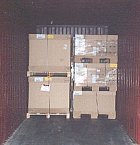 |
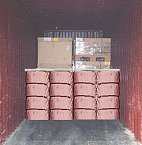 |
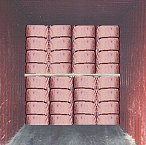 |
Because the bales are brought into their packing position using a forklift truck with bale clamp, they were packed with their narrow, curved side in the direction of the longitudinal axis. Floor dunnage was omitted, but wooden interlayer dunnage was put in place. If the ends are virtually flat, interlayer dunnage is unnecessary. Floor dunnage would be necessary, if the ends of the bales were not packaged and there was a risk of soiling.
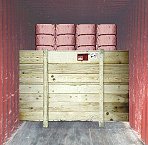 |
 |
 |
For reasons of weight distribution, a batch of bales was stowed in this example with one case and two copper wire reels. Wooden interlayer dunnage was placed on the case, because the middle members of the pallet would otherwise have rested solely on the belt battens of the case. If the pallets were capable of remaining secure without interlayer dunnage, the latter could have been omitted.
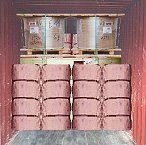 |
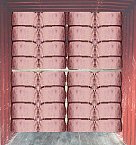 |
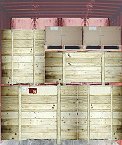 |
Another batch of cotton bales was placed in front of these stowed items and cases and cartons were packed in front of them. If there are no special reasons, such as weight distribution, why all the bales to be packed should not be stowed in one block, it is preferable to do just that, so that the forklift truck with bale clamp does not have to wait around unnecessarily or so that the forklift truck, if only one is available, does not have to be changed over repeatedly from clamp to fork tines and vice versa.